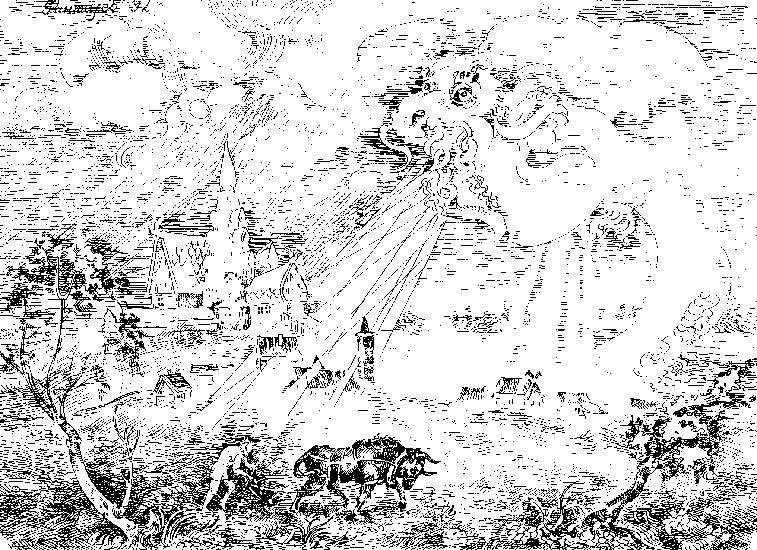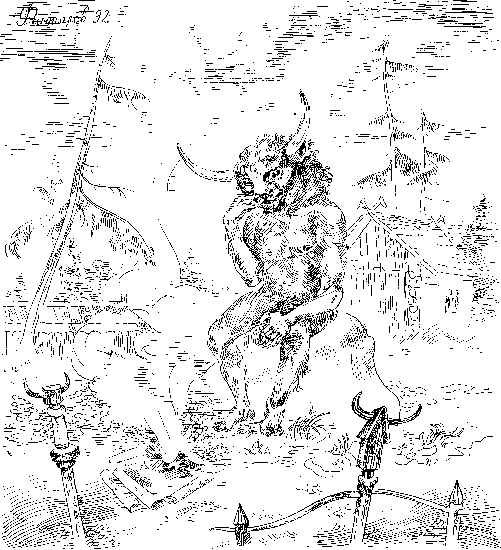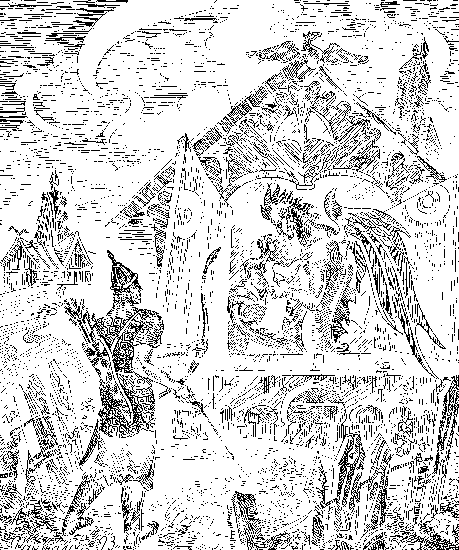|
|
|
Slavic myths 2.

Stribog. (A. Fantalov, the image in Indian ink).
Stribog, probably, was considered in Slavic myths as the god of a wind.

Legend about fiery serpent. (A. Fantalov, the image in Indian ink).
There are Fiery snakes Slavic legends. They are the flying spirit personifying a falling star, a meteor, a lightning.

Veles. (A. Fantalov, the image in Indian ink).
With identification of the Slavic God of Earth Powers there is no problem for east Slav Veles (Volos) likes Balt Vels. He was popular and considered as the god of "all Russia" in counterbalance Perun - to the patron of princely warriors. In Kiev Perun's idol stood on mountain and Veles's idol down, in the bottom part of city. In ancient Russian sources Veles is the god of cattle and riches. "The Word about Igor's regiment" names legendary poet Boyan (probably, living at court yard Yaroslav Wise) 'Veles's grandson', that reflects connection of the God of Earth Powers with ceremonial and, in genesis - priestly functions. Veles has left a rich trace in national culture of the Slavs. In winter holidays, taking place from January 7 till January 19, and also on a pancake week April 6 people dressed oneself animal (bull and bear) masks and coats fur outside sheepskin, with cattle bell at a belt. The Bulgarians were kept this custom till second half of 20 century. The custom to left last ears in a field, "for Veles's beard" is connected to Veles's cult also. After christening image of Veles was divided. On the one hand, he was identified with Saint Vlasiy, especially popular in Russian north. Per day of Saint Vlasiy there was a custom of burning of 'the cow death' that reminds burning bones of animals in Balt holiday of vele. In pagan function Veles 'God Volosatik' was perceived as some spirit.
Viking myths 1. Menu